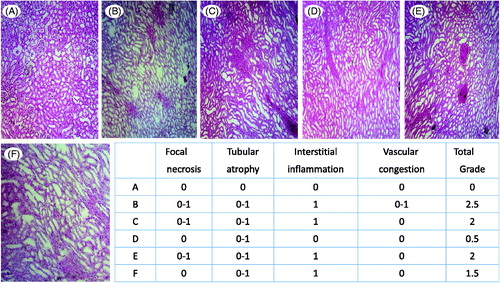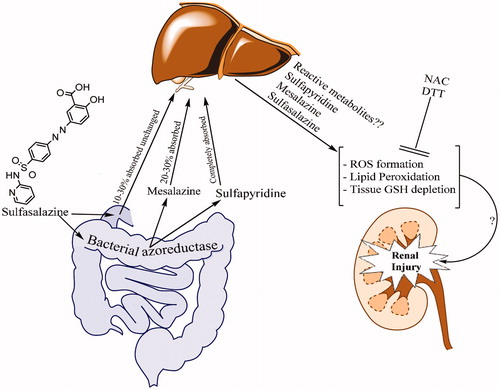Figures & data
Table 1. Markers of sulfasalazine-induced renal damage and the role of thiol-reductants administration.
Figure 1. Effects of thiol reducing agents administration on kidney histopathological changes in sulfasalazine-treated animals. Rats received sulfasalazine (600 mg/kg/day, PO) for 14 consecutive days alone and/or in combination with intraperitoneal administration of thiol-reductants. (A) Photomicrograph of kidney section taken from control (vehicle-treated) rats, representing normal tubules. (B) Sulfasalazine-treated rats, showing marked tubular atrophy, focal necrosis, interstitial inflammation, and vascular congestion. (C) and (D) Animals received sulfasalazine and NAC (250 and 500 mg/kg, respectively). Tubular atrophy is detected in these groups, but there is no sign of tubular necrosis in animals treated with 500 mg/kg of NAC. (E) Rats were treated with sulfasalazine and DTT (15 mg/kg). (F) Animals received sulfasalazine and DTT (30 mg/kg). Sulfasalazine-induced focal necrosis was absent in this group.


